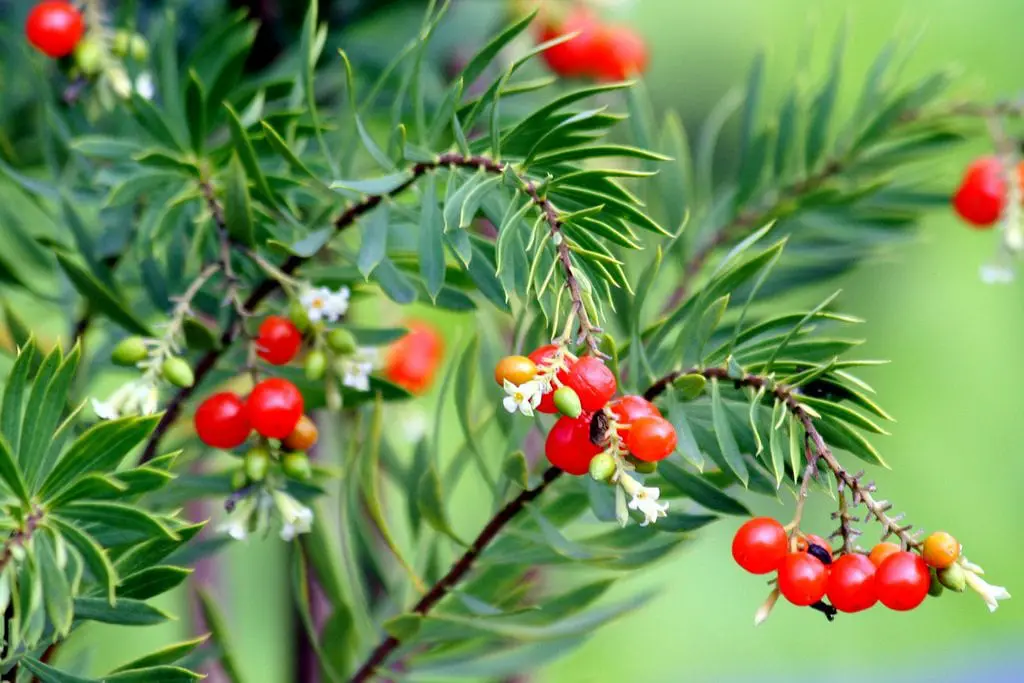
The torvisco is one of those plants that grows in the field, going unnoticed. But what if I told you that it has been used as an insecticide for animals and even to dry wounds? However, you have to be very careful with him, since it is extremely toxic.
To avoid problems, it is very important to know itknow what its characteristics are, where to find it, … in short, everything you need so that it is easy for us to identify it.
Where is the torvisco found?

The torvisco, whose scientific name is daphne gnidiumis a plant that grows in the Mediterranean region, in practically the entire Iberian Peninsula (especially in Alpujarra, Granada), in the Balearic and Canary archipelagos and in North Africa. It is found in uncultivated lands, bushes and pine forests from sea level to 1000 meters of altitudeboth in full sun and in semi-shade.
What are their characteristics?
It is a shrub that measures about 2 meters with evergreen, lanceolate, erect, green leaves. The stems are woody, and have a cylindrical shape. It develops white flowers towards the end of the summer and during the fall. Once it is pollinated, its fruit begins to grow and mature. It ends up taking the shape of a berry, red in color.
The stems and leaves of the torvisco contain a resin thatalthough it has medicinal properties being very useful for cases of chronic constipation or to heal wounds, it is also toxic for animals, including humans.
Contraindications of the torvisco plant
The torvisco is a plant that it does not have to be manipulated if you don’t have experience. Today it is hardly used, since it’s easy to overdose or react to contactsuch as blisters or skin irritations. Especially pregnant or lactating women and animals have to be kept away from it to prevent their health from being altered.

For safety, home remedies should never be prepared without first consulting a doctor.

